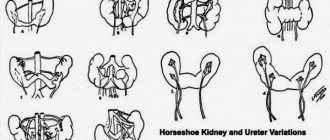How do you know when the end is near?
If a person is in the hospital, doctors, nurses and other medical personnel provide palliative care to the dying person and prepare relatives for the inevitable, but when the old man is at home, it is important to be able to understand the signs of death in the elderly so that the actions are correct and do not complicate the last days of the sick person.
At the terminal stage, the body needs fewer energy resources, food and water consumption decreases, so a decrease in appetite is one of the symptoms of the end approaching.
Cold extremities indicate weakened blood flow
Note. There is no need to force a dying person to eat food by force. A person should eat when he feels the need for it. Often, several days before the fateful hour, older people completely stop eating.
If a bedridden patient refuses even water, then you need to periodically wipe your lips with a wet swab or apply a moisturizer to avoid drying out.
As strength declines, the following symptoms are observed:
Important. No matter how difficult it may be to see signs of impending death in the elderly, you need to pull yourself together and psychologically prepare for the inevitable. The calmer those close to you perceive the situation, the easier it will be for the dying person to care.
Refusal of food, long sleep during the terminal stage
Fasting and pathologically long sleep may indicate approaching death. A lack of nutrients occurs, dehydration develops, and the lack of calories consumed causes weakness. The imminent death is indicated by:
- Hallucinations;
- Apathy;
- Altered consciousness;
- The appearance of venous spots;
- Active development of swelling of the extremities;
- Significant reduction in blood pressure;
- Respiratory system depression.
If the patient refuses to eat and drink, constantly sleeps, you should not force him to wake him up and feed him, this will not lead to anything good. Experts advise from time to time to offer him something to drink or wet the patient’s lips. Try not to disturb your loved one for no particular reason, try to support him, hold his hand more, talk to him. Try to convey to him that he is surrounded by family and loving people.
Signs of imminent death in an elderly person
As the energy rapidly leaves the old man’s body, he begins to communicate less and becomes more tired of people and even his closest relatives. All vital reserves at this time are aimed at maintaining the functioning of the main organs: the heart and brain, so conversations become tiresome. Other signs of imminent departure are indicated in the table and video in this article.
Table. Signs of death in the elderly:
| Symptom | A comment |
| A few months before death, old people begin to sleep noticeably more, which is explained by a slowdown in metabolic processes. |
| This applies to both the frequency of visiting the toilet and the frequency of bowel movements, which is natural with a decrease in appetite and metabolism. In recent days, it is possible to completely stop visiting the toilet. If you refuse food, you may be given IV feeding. |
| The muscles weaken gradually, but within a few days the person becomes unable to even perform simple manipulations, for example, eating and drinking independently. The last remnants of energy are aimed at ensuring the functioning of the brain and heart, so the functioning of most actin-myosin fibers is no longer viable. |
| A decrease in activity, muscle function, metabolic processes and hemocirculation causes the accumulation of blood in the internal organs, which leads to cooling of the skin. Lack of blood flow in the superficial layer contributes to the appearance of pallor, cyanosis and spots on the skin. |
| In certain cases, especially if there are prerequisites (psychosis, Alzheimer's disease, dementia, sclerosis, etc.), consciousness may weaken, the person gets lost, poorly understands and interprets what is happening, cannot express thoughts, and does not recognize the environment. More often than not, everything is not that critical. Even after the heart stops, the brain remains active for a short time. |
| Whether the respiratory rhythm slows down or increases in speed will depend on the individual characteristics of the person. It is important to understand that this is a normal stage in the dying process, and the elderly person does not feel pain. |
Important. If loved ones see abnormal changes or something they think is going wrong, you should always consult your doctor. The doctor will be able to answer all questions and give the necessary instructions for caring for the dying person.
In the last days or hours, an elderly person may experience hallucinations, painful sensations (as indicated by grimaces of pain on the face), groans, screams, etc. In this case, you may need injections of strong painkillers, which are prescribed by your doctor.
Every effort should be made to make the dying process comfortable. You need to try to provide the patient with a comfortable bed, change the sheet on time if the patient walks under himself. In recent weeks, the number of hours of sleep will increase significantly.
A slowdown in blood circulation can cause a drop in body temperature. In this case, some people do not feel any changes, while others need to be covered with a warm blanket because they feel cold.
Treatment options
Medical measures when refusing food are aimed at restoring appetite. The treatment program is prescribed after a thorough examination of the patient.
Depending on the causes of the disease, recovery proceeds in one direction:
- Gastrointestinal tract. If the patient has gastritis, colitis, ulcers or other gastrointestinal disorders, the doctor prescribes a special menu;
- Malignant tumor. If the reason for refusing to eat is oncology, a standard treatment regimen is used: surgery, chemotherapy, radiation;
- Disturbances in the endocrine system. Drug therapy and diet are prescribed
It is more difficult to understand the situation when the cause of the illness is the psychological instability of the patient. Often an elderly mother or father does not want to burden their children and feels like a burden. Against the backdrop of stress, apathy arises, boycotting meals as a sign of protest. In this case, the psychotherapist should work to restore moral balance.
Last day
People often fall into a coma or die in their sleep before they die. It is believed that until the very end, the elderly hear and understand everything from the people nearby, so you need to be with the person until the very end. You can talk calmly and show maximum care until the last minutes.
They say about the onset of death:
In the first two hours, the body should lie in one place and cool down a little so that the blood moves to the back. It is important to ensure that before the onset of rigor mortis, the eyelids are closed, the mouth is closed, and there is a normal expression on the face. If necessary, defects must be corrected manually, which will be important at the farewell ceremony.
It is easier to cope with the loss of a loved one when loved ones and relatives support each other and provide mutual assistance in the first days and after the funeral. Such losses are inevitable, so you need to prepare for them in advance. It is important to know how to properly treat a patient in the last days and to be able to control oneself after the death of a relative.
Source
Scientists and researchers have collected a lot of information regarding this exciting issue, and they are ready to provide us with their verdict. What happens to a person before death?
What happens to the brain before death: reaction
When the process of death begins, changes occur in our brain that can be called irreversible. This includes oxygen starvation, as a result of which neurons quickly die.
But brain activity continues - not in all areas, but only in those responsible for survival. A person may experience hallucinations, not only visual ones, but also auditory or tactile ones.
Is loss of activity a sign of imminent death?
It is difficult to say that the loss of activity that occurs in older people is a mandatory “symptom” of imminent death. Nevertheless, the fact remains: in old age, people begin to sleep longer and stay awake less, or, on the contrary, they sleep little, but at the same time constantly feel tired and drowsy.
The simplest activities can exhaust older people: making tea, walking around the room, going to the restroom. Sometimes it seems that old people are constantly dozing. Some older people get tired not only from physical activity, but also from mental activity - they can be exhausted by conversation or thinking.
Problems with the nervous system and psyche in bedridden people
One of the quickly developing problems is insomnia at night. The idea of resorting to sleeping pills comes very quickly and is often implemented by the patient even without consulting a doctor. The use of sleeping pills, as a rule, does not provide good, deep sleep. A person, although he sleeps, does not rest, becomes “lethargic”, tired, which, in turn, leads to irritability and further to depression. Manifestations of diseases of the nervous system intensify if the patient is forced to spend some time in a supine position. For example, Parkinson's disease. One of the manifestations of this disease is stiffness in movement. So, if a patient breaks his leg and lies in bed for a month for this reason, then the stiffness will be even greater. The time for rehabilitation after a long stay in bed in patients with diseases of the nervous system increases by 4-5 times. Let's return to the case of the fracture. Typically, a patient with a relatively healthy nervous system spends the same amount of time in a cast for the same amount of time being rehabilitated. For example, 1 month in a cast means approximately 1 month for him to start walking again without crutches or a cane. A patient with a disease of the nervous system will need 4-5 months. Not long, but frequent lying in bed for patients with a disease of the nervous system can lead to early permanent stay in bed. Long-term patients often suffer from social “wildness”, i.e. loss of social behavior skills, especially for older people and people with manifestations of mental retardation, which is always prone to progression against the background of immobility. Older people who have been on prolonged bed rest fall more often. Their falls often lead to fractures.
Prevention of insomnia consists of fulfilling the requirements for normalizing sleep. It is necessary to organize the patient’s leisure time and create conditions for active mental work. It is necessary to encourage any independent activity of the patient. Try to activate his regime as much as possible. Elderly and weakened patients during the period of restoration of independent walking should use devices for additional support: handrails, walkers, canes, etc.
How does a person feel during death?
Global research in the 1960s helped us understand how a person feels during death; they have not lost their relevance to this day. Psychologist Karlis Osis, together with a large team of doctors and nurses, observed and communicated with dying people - in total, they recorded more than 35.5 thousand deaths during their study.
For the most part, the dying felt discomfort, indifference and pain. There was no fear of inevitable death. In 5% of cases the person felt inspired.
Another study says that the older a person is, the less afraid he is of death. For example, according to a survey among older people, only 10% admitted that they were afraid of panic or were simply afraid of dying.
What hallucinations do people see before death?
Research shows that the hallucinations people see before they die are somewhat similar. At the same time, the consciousness of many remains clear, and the brain continues to work. However, already on the verge of death, some people lost consciousness.
Most often, the visions that come to older people before death are associated with vivid memories and impressions. Also, some of them relate to religion: dying people can see hell or heaven, atheists can see beautiful landscapes and fauna. Many people, regardless of the beliefs they professed during their lifetime, see close people - deceased relatives who “see off” them to another world.
There are studies that prove that dying people can see the tunnel through which they are flying, then themselves, separately from the body, and then meet with loved ones who are already deceased at that time.
Why this happens, scientists don’t know. Presumably, the tunnel occurs due to the death of neurons, but this is just a theory.
Respiratory organs in bedridden patients
In a horizontal position, the volume of the lungs when inhaling air decreases compared to a vertical position. The lack of active movements and a decrease in the volume of pulmonary ventilation leads to a decrease in blood flow and congestion in the lung tissue. The sputum becomes viscous and difficult to cough up. It accumulates in the airways and increases congestion in the lungs. All this leads to the development of an infectious-inflammatory process in the pulmonary system. Prevention consists of active movements of the patient in bed and breathing exercises.
Signs of approaching death
Most often, signs of imminent death in a bedridden patient can be observed within a few days (in some cases, weeks). A person’s behavior and everyday habits change, and physiological signs appear. Since the attention of a bedridden patient is focused on internal sensations for a long time, he very sensitively feels all the changes that occur. At this time, many patients begin to increasingly talk to their relatives about their approaching death and take stock of their lives. The reaction at this stage is very individual, but, as a rule, the person becomes depressed and really needs the support and attention of his family. Further manifestations of signs of approaching death provide an opportunity for the family to accept the idea of imminent loss and, if possible, to ease the last days of the dying person.
General signs of impending death in bedridden patients
All signs of impending death in bedridden patients are associated with the gradual failure of internal organs and the death of brain cells and are therefore characteristic of most people.
| Type | Sign |
| Physiological | Fatigue and drowsiness |
| Breathing problems | |
| Lack of appetite | |
| Change in urine color | |
| Venous spots | |
| Cold feet and hands | |
| Swelling | |
| Changes in body temperature | |
| Sense organ failure | |
| Psychological | Loss of orientation, confusion |
| Closedness | |
| Mood swings |
Fatigue and drowsiness
One of the first signs of imminent death of a bedridden patient is a change in habits, sleep and wakefulness. The body tries to save energy, as a result the person is in a state of constant sleep. In the last days before death, a bedridden patient can sleep 20 hours a day. Enormous weakness does not allow me to fully wake up. Sleep disturbances occur several days before death.
Psychological signs
All this affects his emotional state. His relatives sense his detachment and isolation. Often a bedridden patient at this stage refuses to communicate and turns away from people. It is important for relatives to understand that such behavior is a consequence of the disease, and not a manifestation of a negative attitude towards them. Subsequently, a few days before death, the decline gives way to excessive excitement. A bedridden patient remembers the past, describing the smallest details of long-ago events. Scientists have identified three stages of change in the consciousness of a dying person:
The death of brain cells leads to hallucinations: often dying bedridden patients report that someone is calling them or suddenly start talking to people who are not in the room. Most often, visions are associated with the afterlife, with the concept of heaven and hell.
Note. In the 60s Californian scientists conducted a study that showed that the nature of the hallucinations of a dying person has nothing to do with education, religion or level of intelligence.
No matter how difficult it may be for the family at this moment, you cannot contradict and try to refute the delusions of the dying person. For him, everything he hears and sees is reality. At the same time, confusion of consciousness is observed: he may not remember recent events, not recognize relatives, or not be oriented in time. Patience and understanding will be required from the family. It is better to start communication with your name. Impaired perception of reality can be observed a month before death. Delirium begins 3-4 days before death.
Refusal to eat and drink
Renal dysfunction and associated signs of death
Due to the lack of water entering the body, the amount of urine excreted becomes much less and its color changes. Urine becomes dark red, sometimes brown. The color changes under the influence of toxins that poison the body. All this signals that the kidneys are beginning to malfunction. Complete cessation of urination is a symptom of kidney failure. From this moment on, the clock starts counting.
During this period, the bedridden patient is no longer too weakened and the process of urination cannot be controlled. Intestinal problems are added. Kidney failure leads to severe swelling of the arms and legs. Fluid that the kidneys no longer remove accumulates in the body.
Symptoms associated with poor circulation
With the onset of the terminal stage, the blood pressure of a bedridden patient drops, and blood circulation becomes centralized. This is the body’s defense mechanism, which in a critical situation redistributes blood flow to protect vital organs: heart, lungs, brain. The periphery is insufficiently supplied with blood, which causes the following signs of death in bedridden patients:
Venous spots begin to appear shortly before death on the feet and ankles. They are often mistaken for cadaveric spots, but their origins vary. Venous spots in a dying person appear due to slow blood flow. After death they turn blue.
Violation of thermoregulation
Neurons in the brain gradually die, and the department responsible for thermoregulation is one of the first to suffer. Before death, a bedridden patient either becomes covered in perspiration or begins to freeze. The temperature rises to critical (39-40°), then drops sharply. When the temperature rises, it is recommended to wipe the dying person’s body with a damp towel and, if possible, give an antipyretic. It will not only help reduce the fever, but also relieve pain, if any. Just before death, the temperature begins to gradually decrease.
Breathing problems
General weakness also affects breathing. Slowing down all processes leads to the fact that the need for oxygen is significantly reduced. Breathing becomes rare and shallow. In some cases, difficult, intermittent breathing is noted. Most often it is associated with the fear experienced by the dying person. At this moment, he needs the support of his family, the understanding that he is not alone. As a rule, this is enough to even out breathing.
Vascular problems in a bedridden patient
When lying down, some of the vessels, especially in the lower extremities, are subject to partial or complete compression. The lack of active movements and muscle contractions, as a result of which blood is squeezed out of the venous bed, reduces the speed of blood flow. Paralysis and paresis also contribute to a decrease in blood flow. This can lead to the formation of a blood clot in the vessel.
Thrombus
is a blood clot that partially or completely blocks the lumen of a vessel. Typically, blood clots form in the deep vein system of the lower extremities; this can manifest as pain, swelling, and most importantly, the blood clot can break off and travel through the bloodstream to the lungs and block the lumen of the pulmonary arteries. This often ends in death or severe disability for patients. Prevention of thrombosis consists of creating an elevated position for the lower extremities and bandaging the legs with elastic bandages. It is necessary in cases where there are no contraindications to use gymnastics for the legs. The exercises are especially effective when the patient, lying on his back with his legs raised up, makes circular movements in the manner of riding a bicycle. With prolonged lying down, vascular tone weakens significantly. This leads to the fact that when the patient’s position changes, for example, from lying to semi-sitting or sitting, his blood pressure may drop sharply. And when the patient tries to stand up, fainting may occur. The so-called orthostatic collapse develops.
Death, its stages and signs
The death of a bedridden patient consists of several stages, each of which has its own characteristic signs.
Terminal state
The preagonal stage can last from several days to a couple of hours. A bedridden patient may experience the following symptoms:
The onset of clinical death is preceded by a stage of agony. The agony can last from several minutes to half an hour (cases have been recorded when the agony lasted for several days). The first sign of the onset of agony is inhalation, which involves the entire chest, including the muscles of the neck and face. The heart rate accelerates, blood pressure rises briefly. During this period, a bedridden patient may feel relief before death. The circulatory system changes: all blood is redirected to the heart and brain to the detriment of other internal organs.
If there is no breathing for 5 minutes, cell death begins in the brain. The final stage of death begins—biological.
Biological death
There are early and late signs of biological death:
| Early | Cloudy, dry cornea of the eye | In 1-2 hours |
| Beloglazov's sign (cat's eye) | 30 minutes after death. When you squeeze the eyeball with your fingers, the pupil is deformed, acquiring an elongated shape. | |
| Late | Dry skin and mucous membranes | 1.5-2 hours. Lips are dense, dark brown in color |
| Cooling down of the body | Body temperature decreases by 1 degree for each hour that passes after a bedridden patient dies | |
| Appearance of cadaveric spots | They appear when dying (after 1.5 hours) and continue to appear for several hours after death. The reason is that the blood sinks due to gravity and becomes visible through the skin | |
| Rigor | A bedridden patient after death is subject to rigor mortis within 2-4 hours. The rigor will disappear completely after 2-3 days. | |
| Decomposition | /No/ |
At the stage of biological death, it is no longer possible to resuscitate a person.
Of course, even having noticed and correctly assessed all the signs, one cannot be absolutely prepared for the death of a loved one. But you can try to make his last hours and days as comfortable as possible. Psychologists and doctors give the following recommendations for relatives of a dying bedridden patient:











